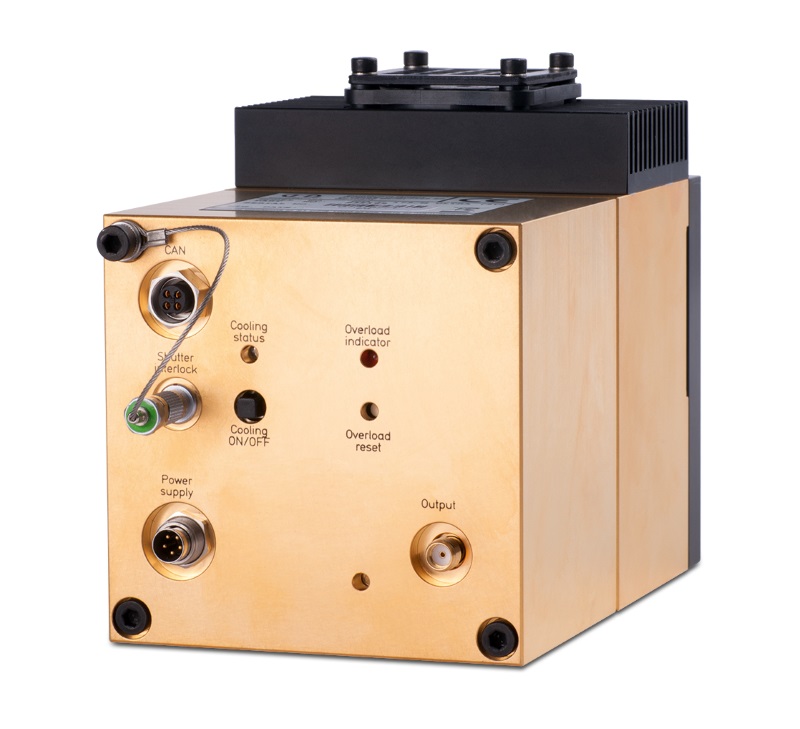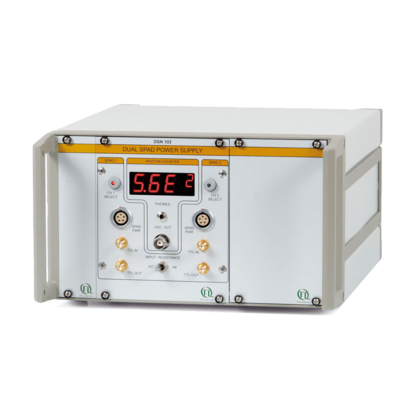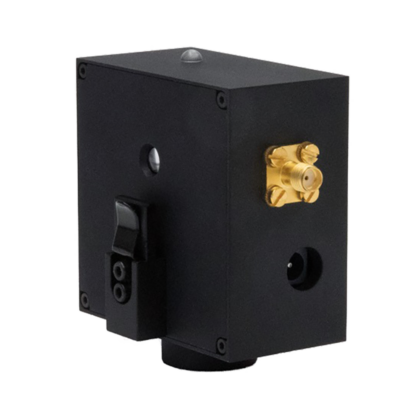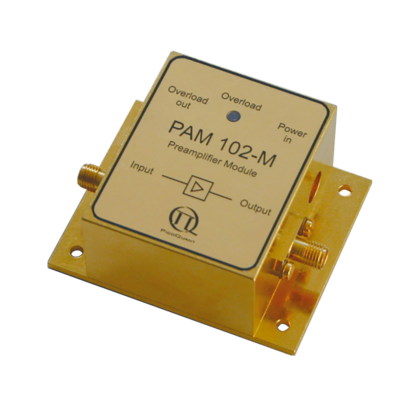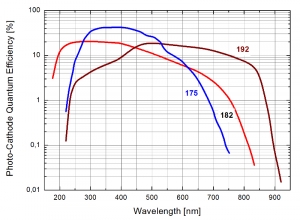Photomultiplier Detector Assembly
- Timing resolution < 180 ps (FWHM)
- Quantum efficiencies up to 40% (cathode dependent)
- Spectral ranges from 185 nm to 920 nm available
- Optional thermoelectric cooler
- Internal GHz pre-amplifier and shutter
- Simple 12 V DC power supply, no HV supply required
- RF and magnetic shielding with refined iron or nickel coated aluminum housing
The PMA detector is a single photon sensitive, fully integrated, fast time response and low noise photon sensor. The PMA integrates a fast Photomultiplier Tube (PMT), a high voltage power supply and a pre-amplifier. Thermoelectric cooling and automatic overload protection are available as an option.
Housing with dedicated RF and magnetic shielding
These devices are built in an iron or nickel coated aluminum housing with titanium nitride or gold refinement to achieve high level of RF and magnetic shielding and protection against interference with other devices. The built in pre-amplifier is specially targeted at timing sensitive applications such as Time-Correlated Single Photon Counting (TCSPC). Signal output for all models is a standard 50 Ohms SMA connector.
Spectral ranges between 185 nm and 920 nm
Various photocathodes can be incorporated into the PMA to meet the user’s needs. Three different cathode versions are available. A blue sensitive, low dark count version with very high quantum efficiency up to 40% covers the spectral range from 230 nm to 700 nm. The standard unit is sensitive in the range from 185 nm to 820 nm and features a quantum efficiency up to 20%. An extended red sensitive cathode covers the 230 nm to 920 nm range with a quantum efficiency up to 20%. A thermoelectrically cooled housing is available to reduce the dark count rate (recommended for red sensitive versions).
Integrated shutter, overload detection
The housing is available in three different versions. The OEM design contains no safety shutter. Standard PMA-M features a security shutter, which can be interlocked with e.g. a sample chamber lid. Cooled versions (PMA-C Series) incorporate in addition an automatic overload detection function that closes the shutter in case of over-illumination. All modules needs a 12 V DC supply line, which is delivered with the PMA-M and PMA-C versions.
Applications
The single photon sensitive detectors of the PMA Series can be used in various applications, where the large active area, good sensitivity and good timing resolution of the detector are important, such as:
- Time-Resolved Fluorescence
- Fluorescence Lifetime Imaging (FLIM)
- Phosphorescence Lifetime Imaging (PLIM)
- Foerster Resonance Energy Transfer (FRET)
- Fluorescence Anisotropy (Polarization)
- Time-Resolved Photoluminescence (TRPL)
- TRPL Imaging
- Lanthanide Upconversion
- Bunch Purity
- LIDAR/Ranging/SLR
- Diffuse Optical Tomography and Imaging































